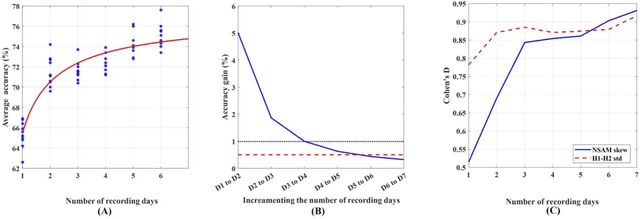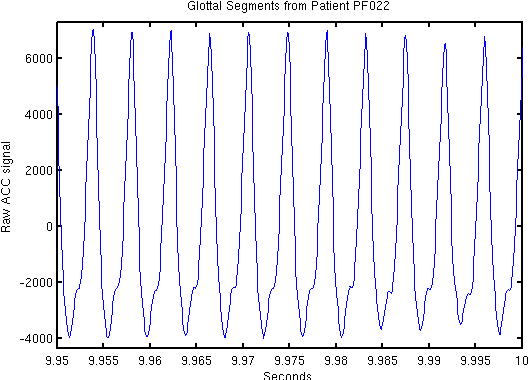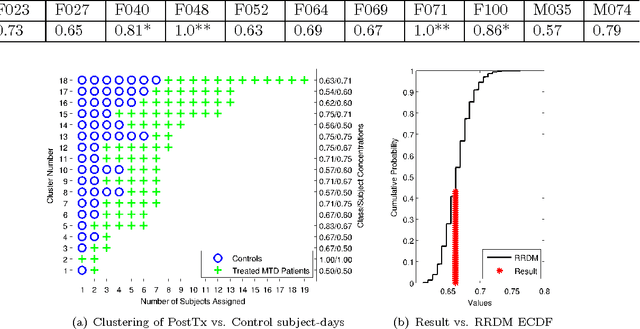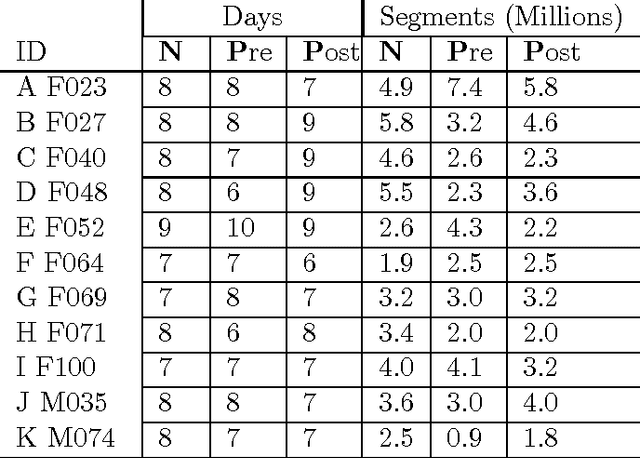Jarrad H. Van Stan
Effects of Recording Condition and Number of Monitored Days on Discriminative Power of the Daily Phonotrauma Index
Sep 04, 2024



Abstract:Objective: The Daily Phonotrauma Index (DPI) can quantify pathophysiological mechanisms associated with daily voice use in individuals with phonotraumatic vocal hyperfunction (PVH). Since DPI was developed based on week-long ambulatory voice monitoring, this study investigated if DPI can achieve comparable performance using (1) short laboratory speech tasks and (2) fewer than seven days of ambulatory data. Method: An ambulatory voice monitoring system recorded the vocal function/behavior of 134 females with PVH and vocally healthy matched controls in two different conditions. In the lab, the participants read the first paragraph of the Rainbow Passage and produced spontaneous speech (in-lab data). They were then monitored for seven days (in-field data). Separate DPI models were trained from in-lab and in-field data using the standard deviation of the difference between the magnitude of the first two harmonics (H1-H2) and the skewness of neck-surface acceleration magnitude. First, 10-fold cross-validation evaluated classification performance of in-lab and in-field DPIs. Second, the effect of the number of ambulatory monitoring days on the accuracy of in-field DPI classification was quantified. Results: The average in-lab DPI accuracy computed from the Rainbow passage and spontaneous speech were, respectively, 57.9% and 48.9%, which are close to chance performance. The average classification accuracy of in-field DPI was significantly higher with a very large effect size (73.4%, Cohens D = 1.8). Second, the average in-field DPI accuracy increased from 66.5% for one day to 75.0% for seven days, with the gain of including an additional day on accuracy dropping below 1 percentage point after 4 days.
Uncovering Voice Misuse Using Symbolic Mismatch
Aug 08, 2016



Abstract:Voice disorders affect an estimated 14 million working-aged Americans, and many more worldwide. We present the first large scale study of vocal misuse based on long-term ambulatory data collected by an accelerometer placed on the neck. We investigate an unsupervised data mining approach to uncovering latent information about voice misuse. We segment signals from over 253 days of data from 22 subjects into over a hundred million single glottal pulses (closures of the vocal folds), cluster segments into symbols, and use symbolic mismatch to uncover differences between patients and matched controls, and between patients pre- and post-treatment. Our results show significant behavioral differences between patients and controls, as well as between some pre- and post-treatment patients. Our proposed approach provides an objective basis for helping diagnose behavioral voice disorders, and is a first step towards a more data-driven understanding of the impact of voice therapy.
 Add to Chrome
Add to Chrome Add to Firefox
Add to Firefox Add to Edge
Add to Edge